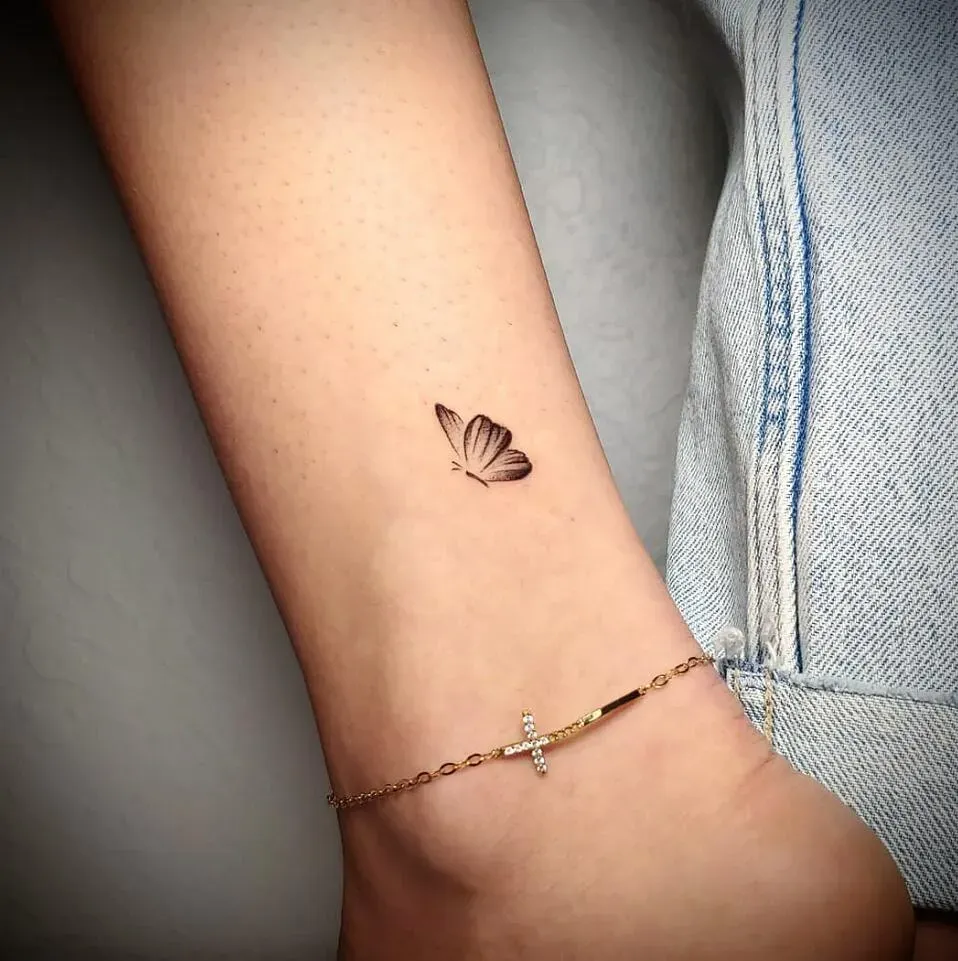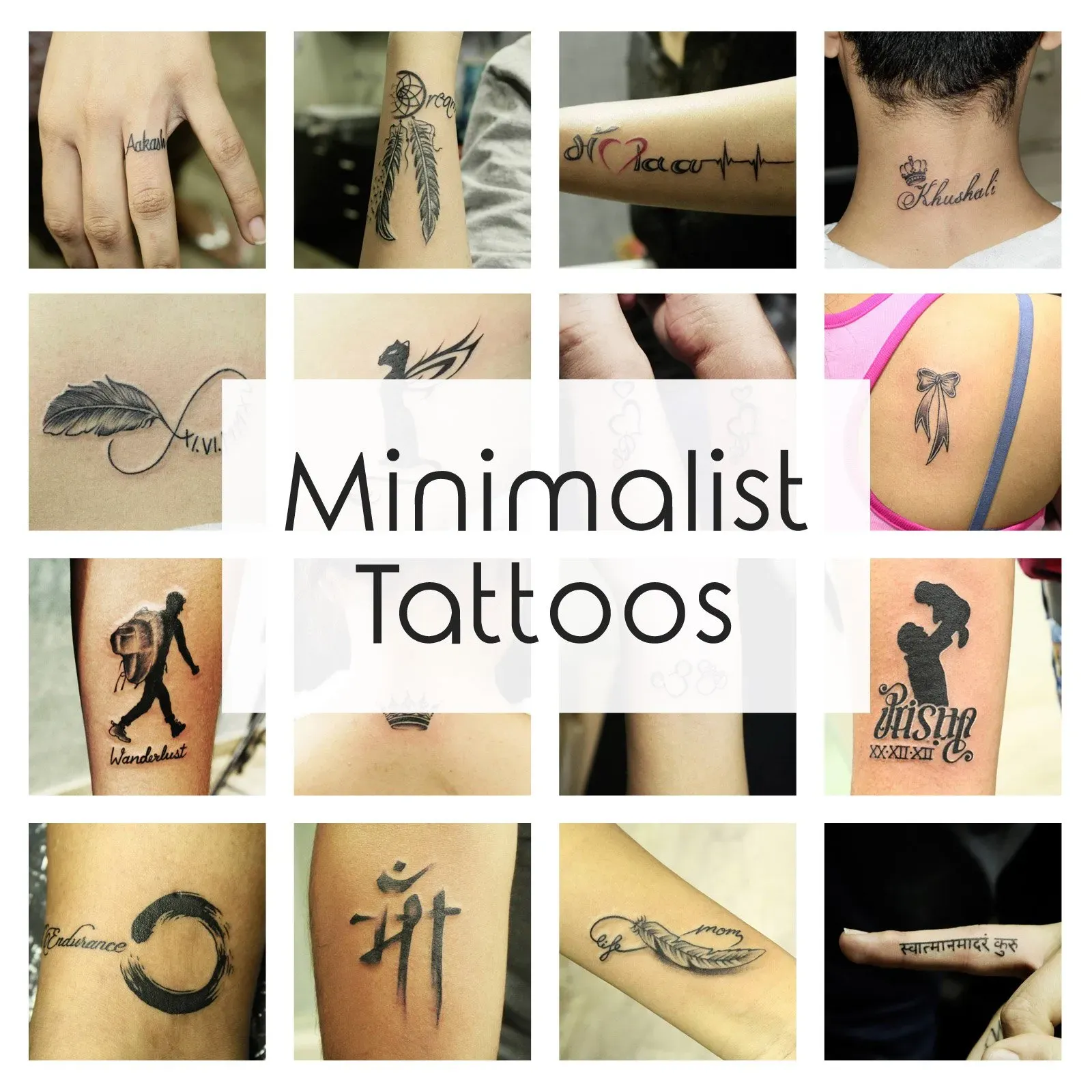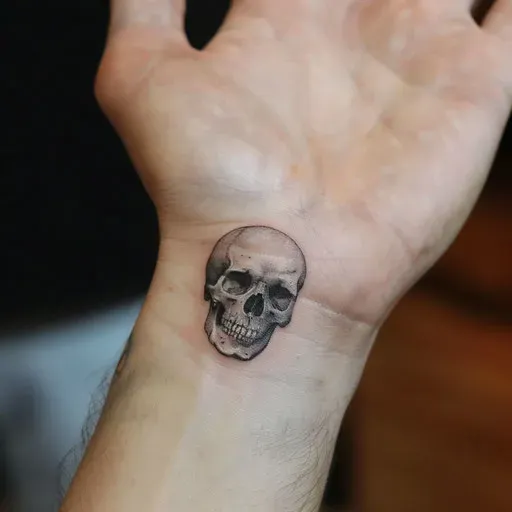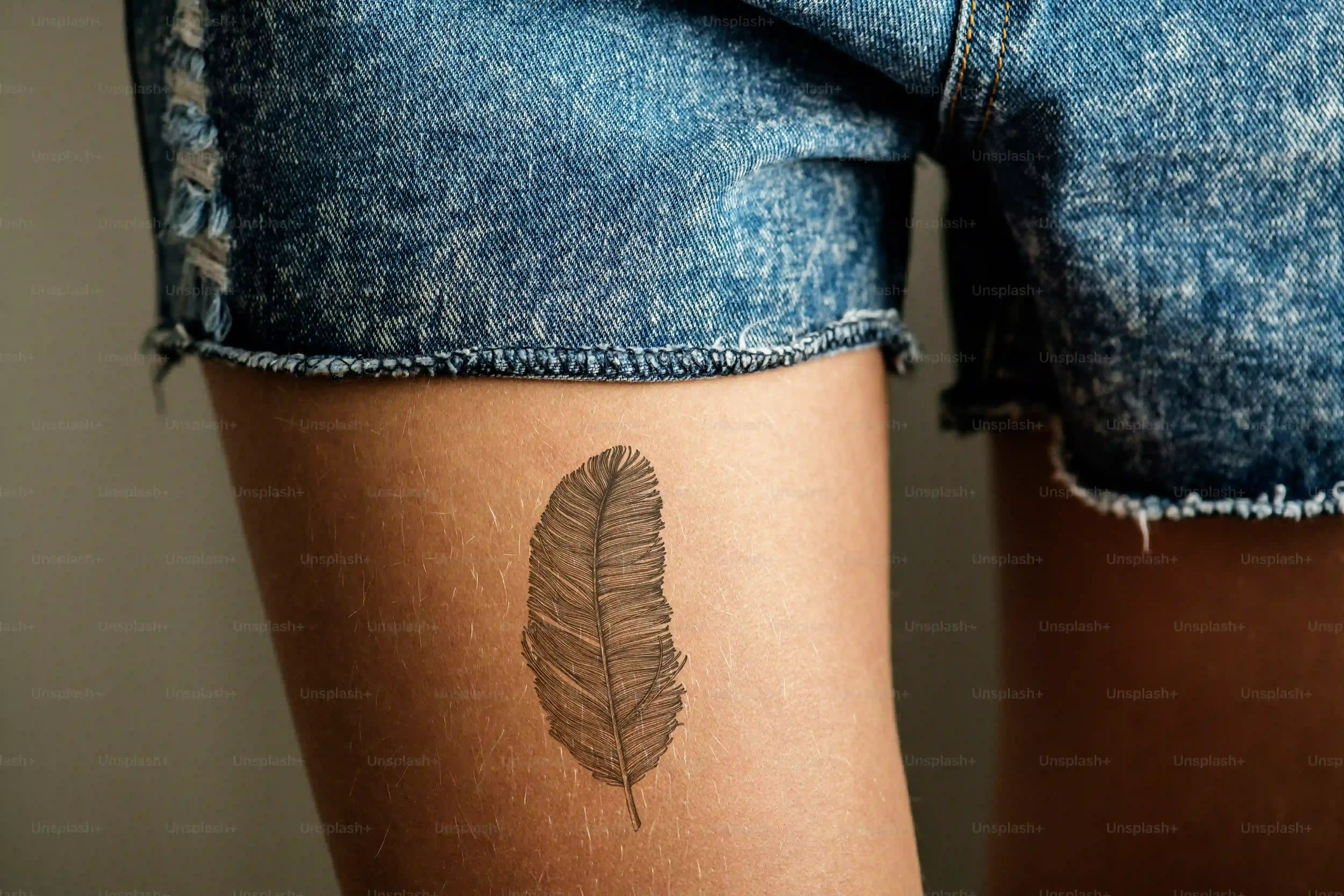Table of Contents
So, you're thinking about getting some ink, but maybe you're not ready for a full sleeve or a back piece that requires a map to navigate. You're probably eyeing those subtle, blink-and-you'll-miss-it marks that seem to pop up everywhere these days. We're talking about tiny tattoo designs. They look simple, almost effortless, and sure, they're less of a commitment than a giant dragon. But "tiny" doesn't mean "thoughtless." Getting a tiny tattoo still involves needles, permanence, and needing to know what you're actually doing.
Getting Started: Why Tiny Tattoo Designs Might Be Right for You
Getting Started: Why Tiny Tattoo Designs Might Be Right for You
Less Commitment, More Art
Let's be honest. Getting a tattoo, even a small one, feels like a big deal the first time. You're putting something permanent on your body. Tiny tattoo designs offer a way to test the waters without diving headfirst into the deep end. They're discreet, easily hidden if your job frowns on visible ink, or if you just prefer to keep your body art personal. Think of it as a whisper rather than a shout. You can express something meaningful to you without making a massive statement that dominates your look. It's about personal significance in a compact package.
Pain Tolerance and Price Tag
Another major plus for tiny tattoo designs? Generally speaking, they hurt less and cost less than larger pieces. Fewer lines, less shading, and a shorter time under the needle usually mean a less intense experience. This is a huge factor for many first-timers or anyone with a lower pain threshold. And while tattoo pricing varies wildly based on the artist, location, and complexity, a tiny design is almost always going to be more budget-friendly than a larger piece. It makes getting custom art feel more accessible.
Considering tiny ink? Here are a few reasons people choose tiny tattoo designs:
- They want a first tattoo without a huge commitment.
- They need the option to easily conceal the tattoo.
- They prefer subtle, understated body art.
- They have a lower pain tolerance.
- They are working with a limited budget.
- They want a small symbol with deep personal meaning.
Popular Tiny Tattoo Designs and What They Actually Represent
Popular Tiny Tattoo Designs and What They Actually Represent
Alright, so you've decided tiny might be the way to go. Now, what the heck do you actually get? Forget the Pinterest boards filled with generic "inspo." Let's talk about some popular tiny tattoo designs people actually get and what they often signify, or are at least intended to signify. You see a lot of simple lines, dots, and symbols. A single dot might represent a journey or a starting point. A tiny wave? Could be a love for the ocean, or maybe just that one time they almost drowned on vacation. Minimalist designs are big because they scale down well. Think simple geometric shapes, constellations, or single letters or initials. People often pick things that have a personal story, even if it's just a tiny inside joke or a reminder of a specific moment. It's less about broadcasting a message and more about holding onto a feeling or memory.
What's the story behind your tiny ink? People often choose designs that represent:
- Milestones or significant dates
- Loved ones (initials, birthdays)
- Personal beliefs or philosophies
- Hobbies or passions (a tiny book, a music note)
- Inside jokes or shared memories
- Overcoming challenges
Where to Put Your Tiny Tattoo Designs: Strategic Placement
Where to Put Your Tiny Tattoo Designs: Strategic Placement
High-Visibility Hotspots for Tiny Ink
Alright, you've got your tiny tattoo designs picked out, or at least an idea of what you want. Now, where does it go? The beauty of small pieces is their versatility. You can tuck them almost anywhere. The wrist is a classic, easy to see for you and others, and generally not too painful. Fingers are popular, though they fade notoriously fast – your artist should warn you about that. Behind the ear is another favorite for tiny tattoo designs, offering a peek-a-boo effect. The ankle bone or inner ankle is also common, especially for something like a small symbol or initial. These spots are visible enough to show off your ink when you want to, but also easy to cover up if needed. Just remember, high-friction areas mean more potential fading.
Hidden Gems and Unexpected Canvas
Maybe you want your tiny tattoo designs to be more of a secret, just for you or a select few. The inner bicep is a great spot, visible only when you lift your arm. Ribs can hold some beautiful tiny pieces, though be warned, that's often less "tiny pain" and more "significant discomfort." The back of the neck, just below the hairline, is another discreet option. I saw someone with a tiny little arrow pointing down their spine there once – simple, but cool. The top of the foot or collarbone area also work well for tiny designs, offering flat surfaces that can showcase detail, assuming the detail isn't microscopic, which it shouldn't be on a tiny tattoo anyway.
- Inner wrist: Classic, visible, relatively low pain.
- Ankle: Easy to cover, good for simple shapes.
- Behind the ear: Discreet, often used for single symbols.
- Fingers: Trendy, but prone to fading quickly.
- Inner bicep: Hidden unless you lift your arm.
- Ribs: Can be painful, but a flat, large canvas for tiny elements.
- Back of neck: Easily concealed by hair or clothing.
Choosing Wisely: Factors Beyond Just Looking Cool
Picking the perfect spot for your tiny tattoo designs isn't just about aesthetics. Think about your lifestyle. Do you work in a conservative environment? Maybe the wrist isn't the best call. Does your job involve a lot of physical labor or friction on a specific body part? That could impact how your tiny tattoo ages. Consider how the skin in that area changes over time – some spots sag or stretch more than others. Also, think about pain tolerance again. Bony areas or spots with thin skin directly over bone, like ankles or ribs, are generally more sensitive than fleshier areas like the forearm. Talk to your artist; they've seen it all and can give you realistic expectations based on the specific tiny tattoo designs you're considering and your chosen placement.
Making It Last: Caring for Your Tiny Tattoo Designs
Making It Last: Caring for Your Tiny Tattoo Designs
The Crucial First Few Weeks: Don't Mess It Up
you survived the needle part and you've got your fresh tiny tattoo designs. Now comes the part where you actually have to, you know, *care* for it. This isn't rocket science, but skipping steps here is how your crisp little design turns into a blurry mess. Your artist will likely cover it with a bandage – listen to their instructions on how long to keep it on. Once it's off, gentle cleaning is key. Use lukewarm water and a mild, unscented soap. Pat it dry with a clean paper towel, not your fluffy bath towel that's been hanging there since last Tuesday. Then, a thin layer of recommended ointment or lotion. "Thin" is the operative word here; drowning it in cream isn't helping, it's just suffocating the skin and potentially causing problems. Do this a couple of times a day. Your tiny tattoo designs need to heal properly, like any wound.
Long-Term Love: Sunscreen is Your Best Friend
So, the initial healing phase is over. Your tiny tattoo designs look great. Now what? The single biggest enemy of vibrant, sharp tattoos, regardless of size, is the sun. UV rays break down the ink pigments over time. That crisp black line can turn grey, and colors fade into muddy indistinction. Get in the habit of applying sunscreen – SPF 30 or higher – whenever your tiny tattoo is exposed to the sun. This isn't optional; it's maintenance. Think of it like putting oil in your car. You also want to keep the skin moisturized in general. Healthy, hydrated skin holds ink better than dry, flaky skin. Some people swear by specific tattoo balms, others just use their regular body lotion. Find what works for you, but consistency is key. Neglecting your tiny tattoo designs after they heal is like buying a nice plant and then just forgetting to water it.
- Always follow your artist's specific aftercare instructions.
- Clean your fresh tattoo gently with mild soap and water.
- Apply a thin layer of recommended ointment or lotion.
- Avoid soaking your tattoo in baths or pools during healing.
- Keep your healed tiny tattoo designs protected from the sun with SPF.
- Moisturize regularly to keep the skin healthy.
- Avoid picking or scratching at scabs during healing.
The NittyGritty: Pain, Cost, and Finding the Right Artist for Tiny Tattoo Designs
The NittyGritty: Pain, Cost, and Finding the Right Artist for Tiny Tattoo Designs
Does Tiny Mean No Pain? (Spoiler: No)
let's talk about the elephant in the room, or rather, the tiny needle in the skin. While tiny tattoo designs generally involve less pain than larger, more detailed pieces, saying they don't hurt at all is a lie someone trying to sell you something would tell. Pain is subjective, right? What one person shrugs off, another finds agonizing. The truth is, you're still getting poked repeatedly by a needle depositing ink under your skin. Areas with less flesh or directly over bone, like fingers, ankles, or ribs, tend to be more sensitive, even for a tiny design. A small dot on your fleshy forearm? Probably minimal discomfort, maybe like a quick scratch. A fine-line word on your collarbone? Expect a bit more sting. It's manageable for most, but prepare for *some* sensation.
What's the Damage? (Your Wallet's, Not Your Skin's)
Alright, let's talk money. You'd think a tiny tattoo would cost pennies, right? Not exactly. While the overall price is less than a sleeve, artists often have a shop minimum. This minimum covers their setup time, sterile supplies, and general overhead, regardless of how small the tattoo is. So, a tiny heart might still cost you the shop minimum, which could be anywhere from $50 to $200 or even more, depending on the artist's reputation and location. Don't haggle over the price of tiny tattoo designs; you're paying for the artist's skill and the guarantee of sterile conditions, not just the size of the ink spot. Think of it as paying for the expertise to make that tiny thing look good and stay put.
Quick check on what influences the cost of tiny tattoo designs:
- Artist's experience and demand
- Shop minimum price
- Location (big city vs. small town)
- Complexity of the tiny design (simple outline vs. tiny detail)
- Placement on the body (some areas are harder to tattoo)
Finding the Wizard for Your Tiny Art
This is arguably the most critical step for tiny tattoo designs. A bad tiny tattoo is *really* noticeable because there's nowhere to hide poor lines or blowouts. You need an artist who specializes in, or at least has a strong portfolio of, fine line work and small tattoos. Don't just walk into the nearest shop and hope for the best. Look at artists' Instagrams and websites. See examples of their tiny work. Do the lines look crisp? Is the shading smooth (if there is any)? Do they seem to understand scale? Have a consultation. Talk to them about your idea. A good artist will be honest if your tiny design idea is too intricate for a certain spot or size, or if it's likely to blur over time. Trust their expertise; they want your tattoo to look good just as much as you do, because it's a reflection of their work.
Tiny Tattoo Designs: More Than Just a Dot
So, there you have it. Tiny tattoo designs aren't just a whimsical decision; they're a commitment, albeit a smaller one visually. We've covered why they might appeal, what some popular ones mean (or don't), where they tend to look best, and the not-so-sexy details about upkeep and cost. The bottom line is, whether it's a single dot or a miniature landscape, do your homework. Find an artist who actually knows how to handle fine lines and small details, understand the care required, and be clear on why you want this specific piece of art on your body forever. It's small, but it's still permanent.